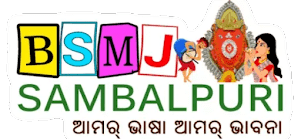"Ghumu Ghumu Ghumu Ghumura Baja"
Ghumura bhitre Ghumra Raja"
Ghumura is not just a dance—it's the heartbeat of Kalahandi, Odisha. With deep roots in tribal traditions and royal warfare, the Ghumura dance and its iconic drum have become cultural symbols of pride for the region. This post explores the origins, rituals, instruments, costumes, and modern impact of Ghumura in Kalahandi's heritage.
Natural Beauty and Cultural Richness of Kalahandi
Kalahandi is a district blessed with hills, forests, rivers, and wildlife. Life here is intertwined with nature and tradition. The people of Kalahandi celebrate their identity through folk music, tribal festivals, rituals, and dances. Ghumura stands out as a prominent cultural expression among these traditions, often performed during major festivals and community gatherings.
Origin of the Word "Ghumura"
The term "Ghumura" is believed to originate from the local word Ghumuri, which reflects the sound the instrument makes—"Ghumu Ghumu". The rhythmic echo produced by the drum is the defining feature of Ghumura music and dance.
Historical Significance of Ghumura Dance
According to legends, Ghumura was once a war drum used by Ravana’s army in Lanka. Later, it was adopted by the tribal warriors (Girijans) in Odisha under the command of Lord Purushottam Ram’s forces. Over centuries, it transitioned from a war instrument to a cultural dance form symbolizing power, unity, and devotion.
Ghumura Worship at Maa Lankeshwari Temple
In Junagadh, Kalahandi, Ghumura is worshipped during the Chitalagi Amabasya festival. Rituals include placing a sword on the pedestal of Maa Lankeshwari and performing Ghumura as an offering. This ritual highlights the spiritual significance of Ghumura beyond just music and dance.
Its presence is also seen in ancient architecture and artifacts—from carvings on the Konark Sun Temple to gold coins discovered at Asurgarh near Narla, proving Ghumura's historical roots.
Traditional Costume and Performance Style
Ghumura Nritya is performed with vibrant traditional attire. Dancers wear dhoti-pajamas and decorate their heads with peacock feathers. Madal players wear ornamental gowns, while singers dress in white robes. Performers often vocalize chants like "Ho!" and "Agyan!" to energize the rhythm and engage the audience.

Structure of a Ghumura Dance Team
A Ghumura dance team typically consists of 13 to 23 members:
- 12 or 18 Ghumura players (in 6+6 or 9+9 formation)
- 1 peacock feather holder
- 1 Nisan (war drum) player
- 1–2 Jhanjh (cymbal) players
- 1 lead singer
While originally designed to celebrate warrior valor, modern Ghumura performances also explore emotions like love and devotion. Though traditional costumes once followed strict patterns, today's performers use more creative and colorful attire to appeal to diverse audiences.
The Instruments: Ghumura, Nisan, and Jhanjh
The Ghumura drum resembles a clay pot, about 22 inches in circumference with a 4-inch black spot at the center of its front face. The Nisan is a semi-circular drum covered with leather and played with a curved stick. Jhanjh refers to large bronze cymbals that complement the main rhythm.
Community Contribution and Global Recognition
The growth of Ghumura wouldn't be possible without the support of local communities. Villagers across Kalahandi play a vital role in nurturing this tradition, especially during festivals like Durga Puja, where Ghumura performances are highlights.
Today, Ghumura is no longer confined to Odisha. It has gained international fame, especially after being featured during the 9th Asian Games. Cultural ambassadors have taken Ghumura to global stages, showcasing the rich folk heritage of Kalahandi to the world.
Conclusion: Ghumura as a Cultural Identity
Ghumura is more than a dance or musical instrument—it's a symbol of Kalahandi's spirit, resilience, and identity. From ancient battlefields to global festivals, Ghumura continues to echo the vibrant cultural pulse of Odisha.
Tags: Kalahandi Ghumura, Ghumura dance Odisha, Ghumura instrument, Odisha folk music, tribal dance India, Ghumura song, Ghumura history, famous Ghumura performance.

.jpg)








